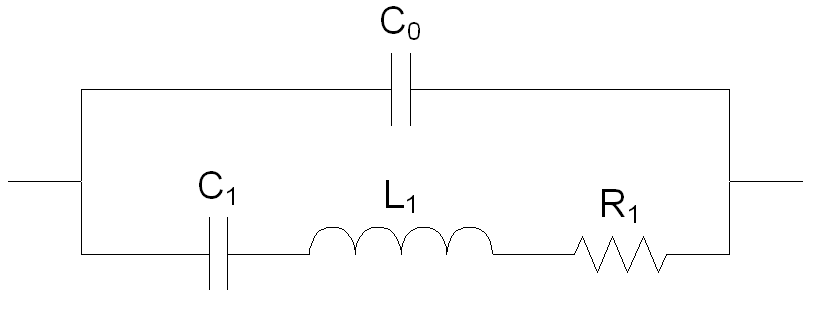1.3 Electrical Model
The equivalent electric circuit of a crystal is shown in Figure 1-4. The series RLC network is called the motional arm and gives an electrical description of the mechanical behavior of the crystal, where C1 represents the elasticity of the quartz, L1 represents the vibrating mass, and R1 represents losses due to damping. C0 is called the shunt or static capacitance and is the sum of the electrical parasitic capacitance due to the crystal housing and electrodes. If a capacitance meter is used to measure the crystal capacitance, only C0 will be measured (C1 will have no effect).

By using the Laplace transform, two resonant frequencies can be found in this network. The series resonant frequency, fs, depends only on C1 and L1. The parallel or anti-resonant frequency, fp, also includes C0. See Figure 1-5 for the reactance vs. frequency characteristics.
Crystals below 30 MHz can operate at any frequency between the series and parallel resonant frequencies, which means that they are inductive in operation. High-frequency crystals above 30 MHz are usually operated at the series resonant frequency or overtone frequencies, which occur at multiples of the fundamental frequency. Adding a capacitive load, CL, to the crystal will cause a shift in frequency given by Equation 1-3. The crystal frequency can be tuned by varying the load capacitance, and this is called frequency pulling.
